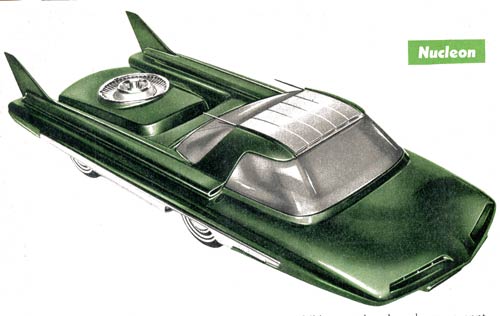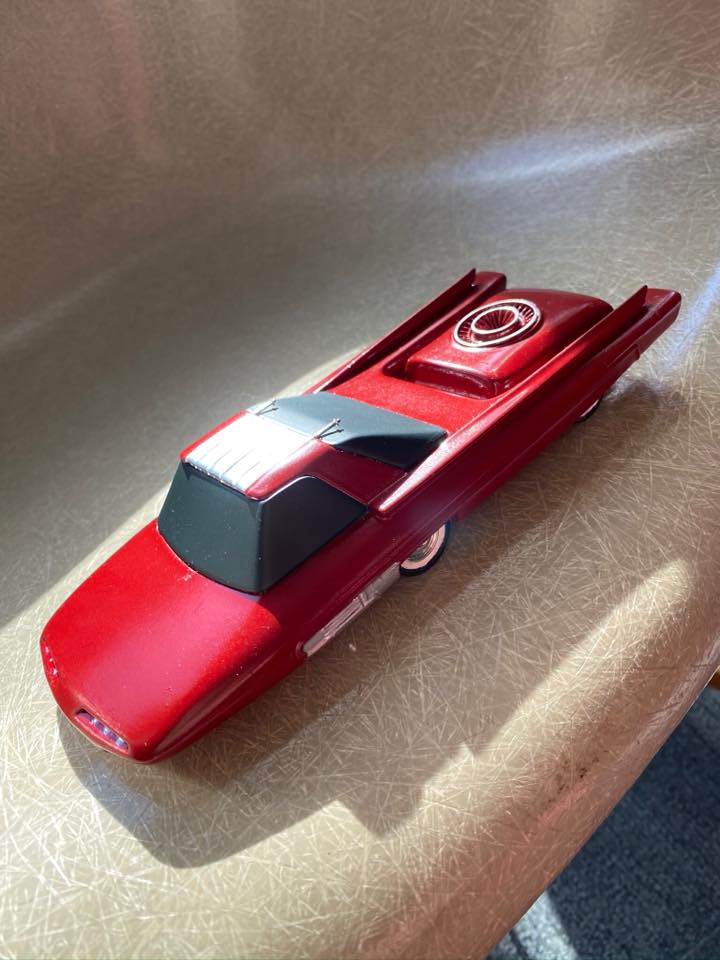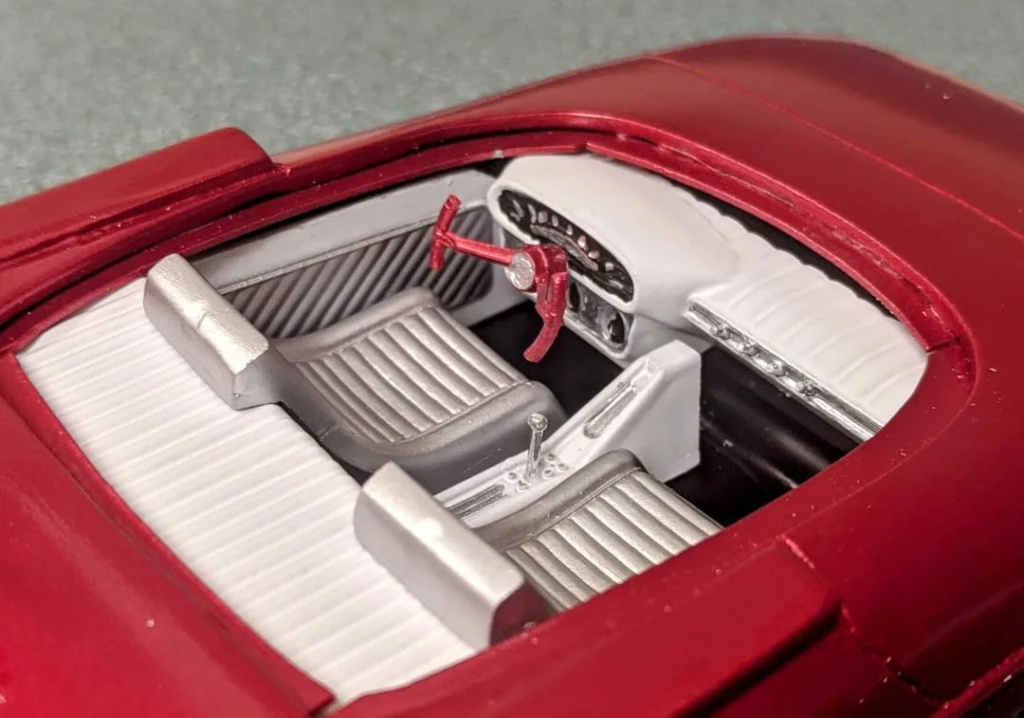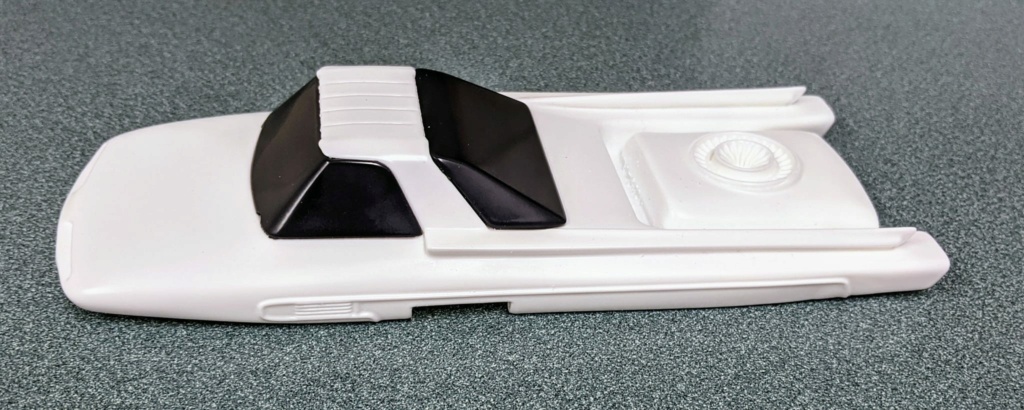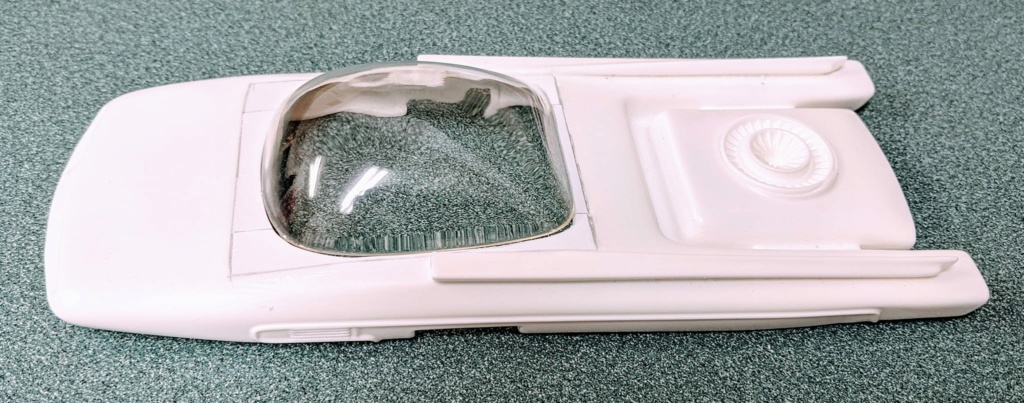Ford Nucleon - concept car 1958
 Ford Nucleon - concept car 1958
Ford Nucleon - concept car 1958
La Ford Nucleon est un concept car développé par le constructeur automobile Ford en 1958. Ce modèle resta à l'état de prototype et seule une maquette au 1/33e fut assemblée. Aux États-Unis, cette voiture reste pour beaucoup l'un des symboles de la montée en puissance de l'énergie nucléaire dans les années 1950.
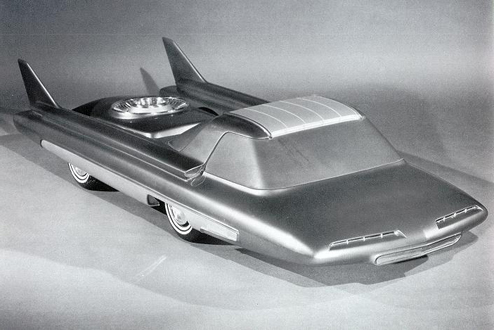
Le groupe propulseur de la Nucleon devait se distinguer de celui des véhicules de l'époque. En effet l'énergie nécessaire à sa propulsion ne devait pas provenir d'un moteur à explosion, mais d'un petit réacteur nucléaire situé à l'arrière du véhicule et alimenté par une capsule contenant des éléments radioactifs. D'après les ingénieurs, ce noyau devait être aisément remplaçable, sa durée de vie dépendant de la vitesse de croisière ainsi que de la distance parcourue par la voiture. Ce système devait aussi permettre de modifier la puissance du véhicule à volonté en remplaçant la capsule par une autre de plus grande puissance. Théoriquement, la Nucleon pouvait parcourir 8000 km avec un cœur atomique de capacité moyenne. Une fois ce dernier épuisé, les ingénieurs pensaient que le conducteurs le rapporteraient dans une station pour pouvoir être rechargé, puis réutilisé.
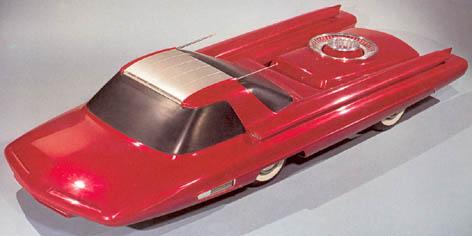
Théoriquement, ce véhicule aurait pu être dangereux pour les utilisateurs et la population du fait des radiations, des réactions nucléaires et des déchets produits.
La maquette de la Nucleon peut être admirée au Henry Ford Museum situé à Dearborn dans le Michigan.
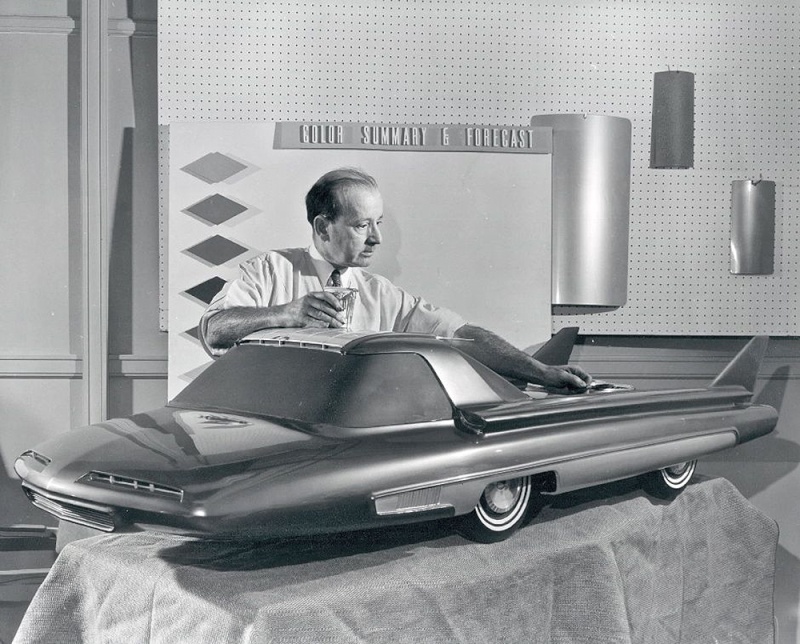
Bob Gale, co-producteur du film Retour vers le futur, a avoué que le réacteur nucléaire en position arrière de la Nucleon avait influencé la réalisation de la DeLorean DMC-12 de son long métrage.
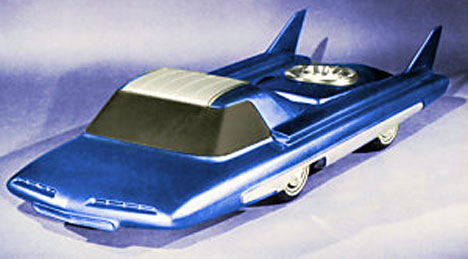
Les producteurs des jeux Fallout 3 et Fallout: New Vegas se sont aussi servis de ce concept car pour créer les voitures inertes présentes dans l'environnement.
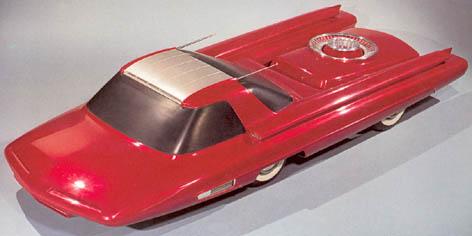

Le groupe propulseur de la Nucleon devait se distinguer de celui des véhicules de l'époque. En effet l'énergie nécessaire à sa propulsion ne devait pas provenir d'un moteur à explosion, mais d'un petit réacteur nucléaire situé à l'arrière du véhicule et alimenté par une capsule contenant des éléments radioactifs. D'après les ingénieurs, ce noyau devait être aisément remplaçable, sa durée de vie dépendant de la vitesse de croisière ainsi que de la distance parcourue par la voiture. Ce système devait aussi permettre de modifier la puissance du véhicule à volonté en remplaçant la capsule par une autre de plus grande puissance. Théoriquement, la Nucleon pouvait parcourir 8000 km avec un cœur atomique de capacité moyenne. Une fois ce dernier épuisé, les ingénieurs pensaient que le conducteurs le rapporteraient dans une station pour pouvoir être rechargé, puis réutilisé.

Théoriquement, ce véhicule aurait pu être dangereux pour les utilisateurs et la population du fait des radiations, des réactions nucléaires et des déchets produits.
La maquette de la Nucleon peut être admirée au Henry Ford Museum situé à Dearborn dans le Michigan.

Bob Gale, co-producteur du film Retour vers le futur, a avoué que le réacteur nucléaire en position arrière de la Nucleon avait influencé la réalisation de la DeLorean DMC-12 de son long métrage.

Les producteurs des jeux Fallout 3 et Fallout: New Vegas se sont aussi servis de ce concept car pour créer les voitures inertes présentes dans l'environnement.

Dernière édition par Predicta le Mar 2 Juin - 8:03, édité 1 fois
_________________
We don't care the People Says , Rock 'n' roll is here to stay - Danny & the Juniors - 1958
 Re: Ford Nucleon - concept car 1958
Re: Ford Nucleon - concept car 1958
_________________
We don't care the People Says , Rock 'n' roll is here to stay - Danny & the Juniors - 1958
 https://www.macsmotorcitygarage.com/nucleon-fords-1958-atomic-car/
https://www.macsmotorcitygarage.com/nucleon-fords-1958-atomic-car/
Straight from the Atomic Age comes the Ford design studio’s nuclear-powered pipe dream, the 1958 Nucleon. Here’s the story behind this implausible but fascinating concept car.
In the 1950s, the Motor City’s automotive design studios were led by think-big, larger-than-life personalities: Harley Earl and Bill Mitchell at General Motors, Virgil Exner at Chrysler, and George Walker at Ford. An enthusiastic futurist and visionary, Walker liked to give his Ford design staff opportunities to stretch out and exercise their imaginations occasionally with forward-looking, far-out projects. And it’s difficult to imagine a vehicle more far out than the 1958 Nucleon, a theoretical atomic-powered car designed by first-year Ford stylist Jim Powers.
No working version of the Nucleon was ever built, it might go without saying, nor even a full-sized mockup. Instead, two scale models were reportedly constructed, one in plaster and one in fiberglass. If you study the period photos you can see some evolution in the design—versions of the model with and without tail fins (compare the two photos above) and with and without the contrasting, metal-colored roof panel.

The Nucleon’s central design concept was a removable power module (Power Cell, in Ford lingo) between the rear wheels, which would presumably house the nuclear reactor, steam turbine, transmission, and final drive unit. Ford theorized that a driver could adjust the reactor output and thus tailor the power available, and that the nuclear power cell could be replaced and refreshed every 5000 miles.
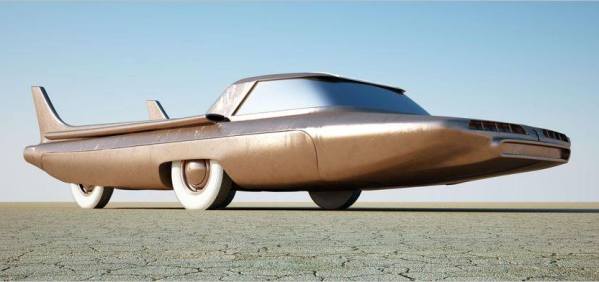
However, Ford simply overlooked the tons and tons of lead required to shield the occupants and community from the radioactive reactor core. Even 60 years later, these and other technical obstacles have yet to be overcome. Ford created several more hypothetically atomic-powered dream cars, including La Galaxie by L. David Ash and the Alex Tremulis-designed Seattle-ite XXI, and like the Nucleon, they were more fantasy than reality.
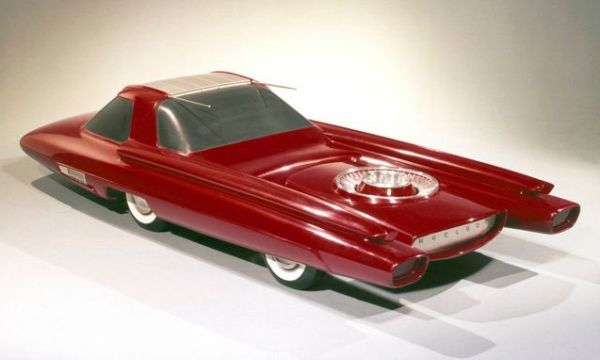
Oh, well. It was all a lark anyway, a highly idealized look at an atomic-powered future that would never come to pass. Jim Powers went on to a highly successful career in automotive and industrial design—his credits include the truly advanced 1961 Thunderbird. Below, William Clay Ford Sr., the grandson of Henry Ford and the father of Ford chairman Bill Ford Jr, poses with the Nucleon. The surviving Nucleon model now resides at the Henry Ford Museum in Dearborn, Michigan.
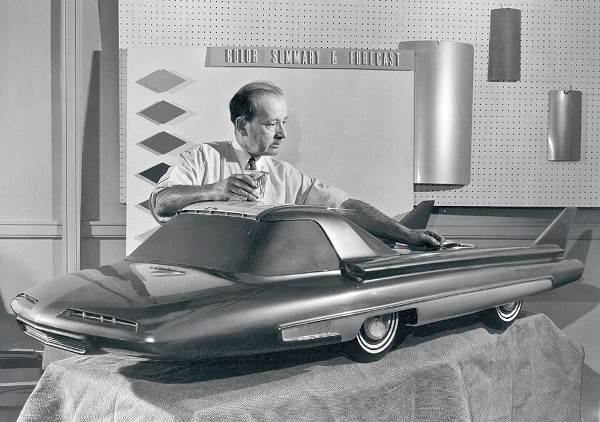
https://www.macsmotorcitygarage.com/nucleon-fords-1958-atomic-car/
In the 1950s, the Motor City’s automotive design studios were led by think-big, larger-than-life personalities: Harley Earl and Bill Mitchell at General Motors, Virgil Exner at Chrysler, and George Walker at Ford. An enthusiastic futurist and visionary, Walker liked to give his Ford design staff opportunities to stretch out and exercise their imaginations occasionally with forward-looking, far-out projects. And it’s difficult to imagine a vehicle more far out than the 1958 Nucleon, a theoretical atomic-powered car designed by first-year Ford stylist Jim Powers.
No working version of the Nucleon was ever built, it might go without saying, nor even a full-sized mockup. Instead, two scale models were reportedly constructed, one in plaster and one in fiberglass. If you study the period photos you can see some evolution in the design—versions of the model with and without tail fins (compare the two photos above) and with and without the contrasting, metal-colored roof panel.

The Nucleon’s central design concept was a removable power module (Power Cell, in Ford lingo) between the rear wheels, which would presumably house the nuclear reactor, steam turbine, transmission, and final drive unit. Ford theorized that a driver could adjust the reactor output and thus tailor the power available, and that the nuclear power cell could be replaced and refreshed every 5000 miles.

However, Ford simply overlooked the tons and tons of lead required to shield the occupants and community from the radioactive reactor core. Even 60 years later, these and other technical obstacles have yet to be overcome. Ford created several more hypothetically atomic-powered dream cars, including La Galaxie by L. David Ash and the Alex Tremulis-designed Seattle-ite XXI, and like the Nucleon, they were more fantasy than reality.

Oh, well. It was all a lark anyway, a highly idealized look at an atomic-powered future that would never come to pass. Jim Powers went on to a highly successful career in automotive and industrial design—his credits include the truly advanced 1961 Thunderbird. Below, William Clay Ford Sr., the grandson of Henry Ford and the father of Ford chairman Bill Ford Jr, poses with the Nucleon. The surviving Nucleon model now resides at the Henry Ford Museum in Dearborn, Michigan.

https://www.macsmotorcitygarage.com/nucleon-fords-1958-atomic-car/
_________________
We don't care the People Says , Rock 'n' roll is here to stay - Danny & the Juniors - 1958
 Rob Miller's 1/24 model
Rob Miller's 1/24 model
_________________
We don't care the People Says , Rock 'n' roll is here to stay - Danny & the Juniors - 1958
 Re: Ford Nucleon - concept car 1958
Re: Ford Nucleon - concept car 1958
_________________
We don't care the People Says , Rock 'n' roll is here to stay - Danny & the Juniors - 1958
 Re: Ford Nucleon - concept car 1958
Re: Ford Nucleon - concept car 1958
_________________
We don't care the People Says , Rock 'n' roll is here to stay - Danny & the Juniors - 1958
 Sujets similaires
Sujets similaires» Association Bagnoles et Bécanes Podensac (33) B & B
» Hot Wheels
» Ford 1957 & 1958 custom & mild custom
» Ford la Galaxie 1958
» Ford Thunderbird 1958 - Hot Wheels
» Hot Wheels
» Ford 1957 & 1958 custom & mild custom
» Ford la Galaxie 1958
» Ford Thunderbird 1958 - Hot Wheels
Permission de ce forum:
Vous ne pouvez pas répondre aux sujets dans ce forum|
|
|

 Connexion
Connexion

